Ever wondered what the difference is between CPOP, HPOP, and CPHP? I’m hoping to set the record straight when it comes to various methods of using heat to aid in the soapmaking process. Or, at the very least, I’ve set out to tell my own accounts of what happens when I attempt these different methods. We’ve already visited CPOP, so next up let’s take a look at CPHP.
CPHP: Crock Pot Hot Process. This method of using hot process calls for heat being applied through the use of a crock pot (or a double boiler or jacketed soup tureen). Like the oven’s purpose in CPOP, the crock pot in CPHP facilitates holding the temperature of the soap at or above 160 degrees, speeding up the saponification process. Remember from the CPOP post that according to Professor Kevin M. Dunn, author of Caveman Chemistry and Scientific Soapmaking, heat speeds along the saponification process. The major difference is that CPHP cooks the soap before it goes into the mold instead of after, which gives the finished soap a more rustic look. Scroll to the end of the tutorial for some FAQs!
Click here to tweet this tutorial!

RECIPE:
6.25 oz Coconut Oil
1.25 oz Meadowfoam Oil
8.25 oz Olive Oil
6.25 oz Palm Oil
1.75 oz Sweet Almond Oil
1.25 oz Shea Butter
3.5 oz Sodium Hydroxide (Lye)
8.25 oz Distilled Water
0.4 oz Sleigh Ride Fragrance Oil (updated with recent IFRA usage rate guidelines)
1/2 teaspoon Burgundy Oxide
1/2 teaspoon Yellow Oxide
1/2 teaspoon Hydrated Chrome Green
1.5 Tablespoons Sunflower oil (or any liquid oil)
2 pound Wood Loaf Mold with Wingnuts
Crock Pot
Click here to add everything you need for this tutorial to your Bramble Berry shopping cart!

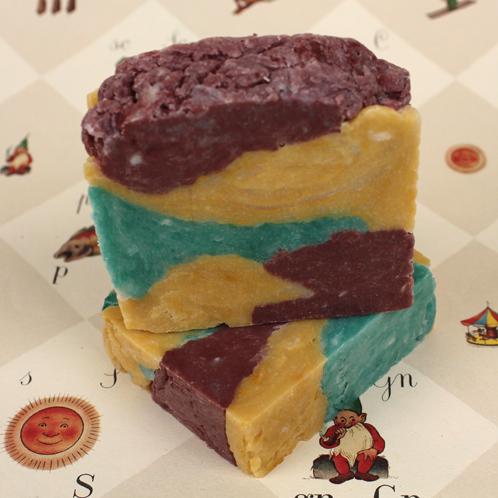
COLOR PREP: Disperse the pigments in 1/2 Tablespoon of liquid oil each. Use a mini mixer to make quick work of the dispersing, but be sure to saturate the powdered pigments in the oil with the tip of the mixer before turning it on (or you’ll wind up with a bit of a mess!).
MOLD PREP: Line the Wood Mold with freezer paper shiny side up. In this tutorial, I used an early-release exclusive-to-Bramble Berry silicone liner for the 2 pound molds.
SAFETY FIRST: Suit up for safe handling practices! Goggles, gloves, and long sleeves are your soap making uniform. Be sure that kids and pets are out of the house or unable to access your soaping space, and always soap in a well-ventilated area. Make sure the soap volume will not fill up more than half of your crock pot. If you have never made cold process soap before, I highly recommend you get a couple of basic recipes under your belt before trying out this tutorial. Check out this (free!) 4-part series on cold process soap making, especially the episode on lye safety. Bramble Berry carries quite a few books on the topic as well, including this downloadable e-book on making cold process soap.
ONE: Slowly and carefully add the lye to the water. Stir until clear, then set aside to cool.
TWO: Melt and combine the Palm and Coconut Oils. Add the Shea Butter to the warmed oils and still until melted. Add the Meadowfoam, Olive, and Sweet Almond Oil and stir to combine. Pour the oils into your Crock Pot’s pot. Slowly add the lye water to the oils. 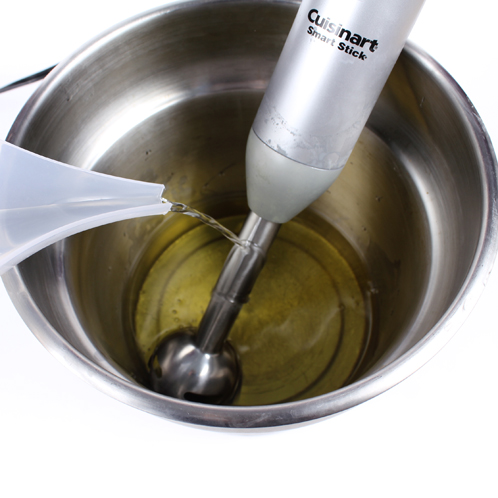 THREE: . Mix with a stick blender until a thick trace is achieved.
THREE: . Mix with a stick blender until a thick trace is achieved. 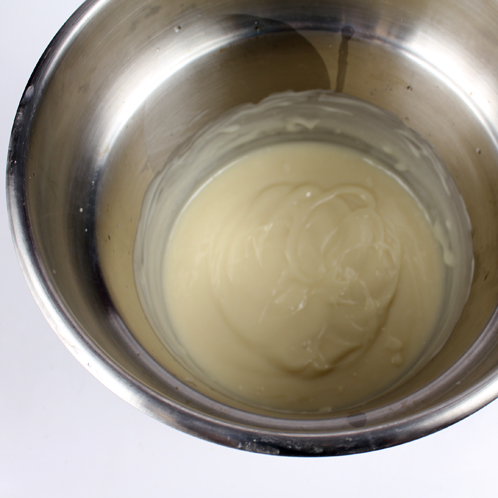 FOUR: Put the lid on the Crock Pot and set it to low. After 15 minutes, check the soap to see the progress made. Starting from the outside, the texture and color of the soap will start to change. If the middle does not appear to be changing, stir the batch to ensure even cooking. Don’t be surprised if the soap starts to grow in volume and tries to climb out of the pot. Do not leave your soap unattended in the first 30 minutes of cook time for this reason. If the soap gets too high in the pot, take the pot off heat and stir like crazy.
FOUR: Put the lid on the Crock Pot and set it to low. After 15 minutes, check the soap to see the progress made. Starting from the outside, the texture and color of the soap will start to change. If the middle does not appear to be changing, stir the batch to ensure even cooking. Don’t be surprised if the soap starts to grow in volume and tries to climb out of the pot. Do not leave your soap unattended in the first 30 minutes of cook time for this reason. If the soap gets too high in the pot, take the pot off heat and stir like crazy.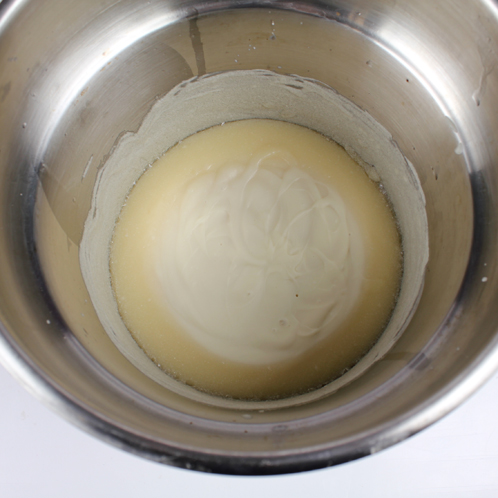 FIVE: The batch will be ready when it’s the texture of mashed potatoes. This may take another 15 minute session or even two or three more stir’n’waits. When you think it’s ready, use a pH strip to test the levels. It should be showing below a 10. Be sure not to overcook the soap; you don’t want too dry a texture for the next steps!
FIVE: The batch will be ready when it’s the texture of mashed potatoes. This may take another 15 minute session or even two or three more stir’n’waits. When you think it’s ready, use a pH strip to test the levels. It should be showing below a 10. Be sure not to overcook the soap; you don’t want too dry a texture for the next steps! 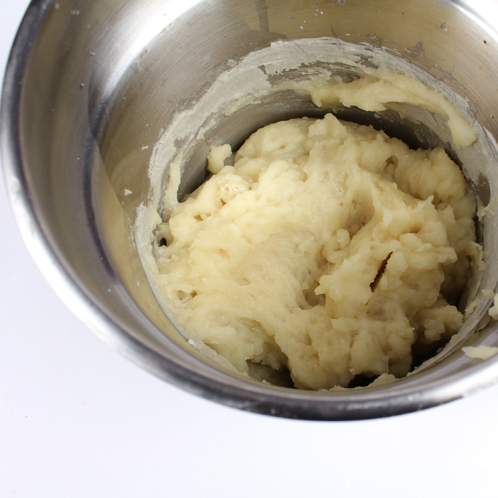 NOTE: The amount of time that the soap takes in the Crock Pot phase can depend on the size and shape of your Crock Pot. The flatter ones meant for roasts may go a bit quicker because the soap will be spread out thinner on the heated surface. The crock pot in the Soap Queen Lab is a stainless steel industrial one, so my soap cooked fairly quickly. SIX: When the soap is ready, add the Sleigh Ride Fragrance Oil and mix well. Split the soap into three even parts (you can totally eyeball this part).
NOTE: The amount of time that the soap takes in the Crock Pot phase can depend on the size and shape of your Crock Pot. The flatter ones meant for roasts may go a bit quicker because the soap will be spread out thinner on the heated surface. The crock pot in the Soap Queen Lab is a stainless steel industrial one, so my soap cooked fairly quickly. SIX: When the soap is ready, add the Sleigh Ride Fragrance Oil and mix well. Split the soap into three even parts (you can totally eyeball this part). 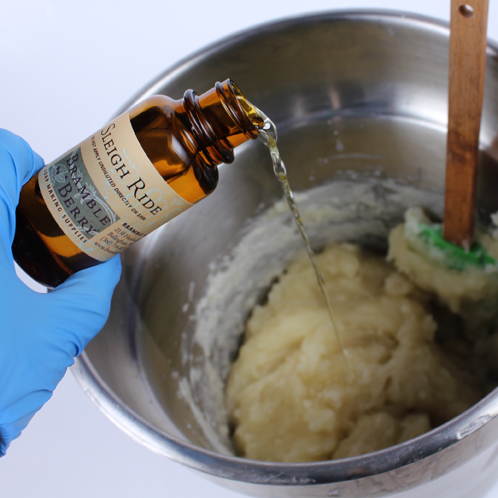 SEVEN: Color one split batch with 1/2 teaspoon of the dispersed Burgundy Oxide, another with 1/2 teaspoon of the dispersed Yellow Oxide, and the third batch with 1 teaspoon of the Hydrated Chrome Green Oxide. Stir in each of the colors well.
SEVEN: Color one split batch with 1/2 teaspoon of the dispersed Burgundy Oxide, another with 1/2 teaspoon of the dispersed Yellow Oxide, and the third batch with 1 teaspoon of the Hydrated Chrome Green Oxide. Stir in each of the colors well.
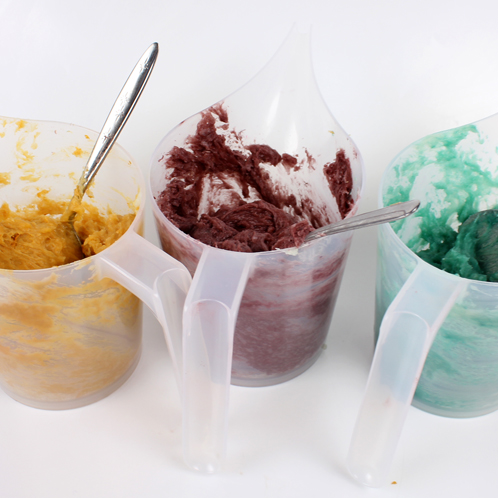
EIGHT: “Plop” a small dollop of the Burgundy colored soap in 2-3 random spots in the lined 2 pound Wood Mold. Follow up with the Chrome Green and Yellow colored soaps, dolloping each randomly through the mold. Repeat this process, alternating colors, until the mold is full. TIP: Tamp the mold on the table after each color to get rid of any air bubbles that might form during the plopping process. You want to work fast because warm soap adheres better than cool soap. 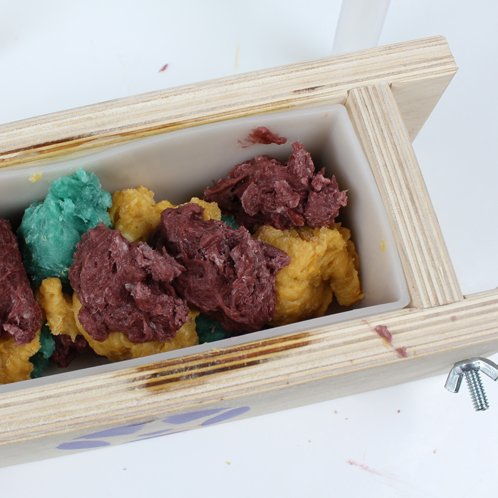 NINE: Using a spatula or piece of plastic wrap, press the soap into the mold while at the same time forming an even and rounded top layer. The soap is very warm and should not be touched without a barrier between your hands and the soap.
NINE: Using a spatula or piece of plastic wrap, press the soap into the mold while at the same time forming an even and rounded top layer. The soap is very warm and should not be touched without a barrier between your hands and the soap.
TEN: Allow the soap to harden in the mold for 1-2 days. Unmold and cut. This soap is ready to use right away but will last longer in the shower after a full 4-6 week drying time.  Some commonly asked questions:
Some commonly asked questions:
Q: What’s this ‘champagne bubble’ phase I hear about with CPHP?
A: Typically, you’ll see a ‘champagne bubble’ stage with traditional stovetop hot process but it can also happen with crockpot hot process. This is the main reason we recommend filling the container no more than half full. During the hot process soapmaking phase, right after trace, but before the full cook some batches will start to separate out and start to grow in volume, and try to literally crawl their way out of the pot. The term ‘champagne bubbles’ comes from the characteristically small bubbles that accompanies this increase in volume. If this happens, turn the heat either fully off or onto low (you don’t want that soap going over the side of the container!) and start to stir. Always wear your gloves and if the soap does start to boil over, do not attempt to grab the hot, boiling soap. Note: I’ve been soaping for almost 20 years now and have only seen this happen once to an instructor teaching a class. He was distracted. Don’t let yourself get distracted.
Q: Can I use my crockpot for food again?
A: Cringe. So, there are two schools of thought on this. One is that you should never reuse anything that soap was in for food. What if there was some lye heavy soap left in there? I tend to fall into this camp – not because I’m scared that you can’t clean your dishes properly but because fragrance oils get into everything so if you don’t mind your rice tasting like Lilac fragrance for your next foreseeable lifetime, clean it out extra well and use it for cooking. If you’re following Good Manufacturing Practices, you should fall along this camp and have separate crockpot for soap and food. You can usually find them at Goodwill for a fairly economical price. The other school of thought says ‘What in the world, lady?! You make soap in this. You literally wash it with soap to clean it! Use it for food and quit being so difficult and high maintenance ” While this is not my personal preference, there are a small group of soapers that would happily subscribe to this theory.
Q: What about cure time?
A: Technically, with hot process soap, you can use the soap as soon as it’s cool. However, your soap will last longer if you let it cure and dry for an extra 4 weeks. This allows the water to evaporate out, leaving with you with a harder bar of soap.
Q: Can I use any fragrance or essential oil? What about those really expensive ones, like absolutes?
A: Ahhhh, I do love a good absolute. Jasmine Absolute is my current BFF in the essential oil world. Surprisingly, some of the very expensive absolutes do make it through the excessive heat process of crock pot hot process (this is because of their extraction method, it does not make them as prone to vaporizing off as easily as some of the oils pressed from citrus rinds, for example). Essential oils and fragrance oils can be used in CPHP. Since the lye has been neutralized before you add the fragrance, most essential oils and fragrance oils work exceedingly well in CPHP. Of course, always make sure you’re using a soap-approved fragrance or essential oil. No potpourri or candle fragrances in your soap, no matter what type of soap you’re making. To be on the safe side, always do a small test batch. There’s not much worse in the soaping experience than making a big batch of soap, only to have the fragrance oil go away.
Q: Can I use plastic molds?
A: Your soap will be around 160-180 Fahrenheit when it comes out of the crock pot. You’ll want to ensure that your mold can handle those temperatures for a short period of time (the soap cools off pretty quickly). Silicone molds that are suitable for baking are a great choice, lined wooden molds are a good option and individual molds, like the Heavy Duty Molds or the Milky Way mold line will work with CPHP. If using any other ones, ensure they work with temperatures up to 160 and above.
Q: Can I use micas in CPHP?
A: Yes, you can use micas in CPHP but you don’t want to use them ‘dry.’ Pre-mix them because mixing dry product into an oatmeal-like consistency is not nearly as easy as mixing in a liquid.
Q: Oh no! I overcooked my soap! It’s a dry mess! Now what?! (wail)
A: Whoops. You just need to rehydrate that soap a bit. Heat up some water (like you’re making tea). Pour in 1 ounce of water for every pound of finished soap, 1 ounce at a time, carefully stirring the water in. This is not a fast process. If you stir too vigirously, you’ll end up with a very bubbly, soapy mixture as the water and soap do what they’re supposed to do: bubble! Once you get to a gloppable consistency, start glopping into your molds.
The end! I hope you enjoy making Hot Process Crock Pot soap.
Click here for a printable PDF of this tutorial.

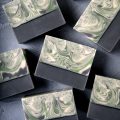
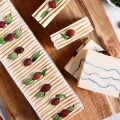
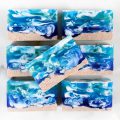
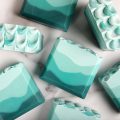
Pretty! This was a really wonderful article.
Thank you for supplying these details.
Hello!
I’m so glad you liked it! 🙂
-Kelsey with Bramble Berry
I tried hot process in the crock pot for the first time today. Definitely NOT liking it! It wouldn’t take any color, was lumpy & hard & is probably gonna endup in my own shower instead of being sold I followed the directions well and everything was fine until I tried adding color & scent. I have blotches of lilac in it but at least it did take the scent(lavender). Is there a trick or any tips from anyone as to what I could have done wrong? I usually do cp but have a craft show coming up and and I figured hp would be done sooner, meaning more to sell. Maybe I’m just having a bad day. I splashed lye in my eye making a batch of cp, and then after over 24 hrs its stilll kinda gel looking with a very oily look and feel. So I wiped up as Mich oil as I could, turned it out & got 12 great looking bars, if they harden. Someone please HELP ME! LOL
Hi Crystal!
I’m sorry hot process is giving you some trouble! But good for you for trying something new! What was the texture of the soap like when you added the fragrance? It should be the texture of fairly thick mashed potatoes. I could see where if your mixture was too thick, it could be really difficult to fully incorporate the fragrance and colors. I would give your bars some more time, it’s possible that they may harden up and be fine. If not, you could rebatch this soap.
Rebatching is a very similar process to hot process, except that you are basically melting down already made soap, and add a small amount of liquid. You can also add more color/fragrance if you’d like. You may find these tutorials helpful!
How to Make Rebatch Soap:
http://www.soapqueen.com/bath-and-body-tutorials/cold-process-soap/soap-queen-tv-presents-how-to-make-rebatch-soap-2/
Ombre Rebatch: http://www.soapqueen.com/bath-and-body-tutorials/cold-process-soap/ombre-rebatch-layers/
I hope this helps! Let me know if you have any more questions 🙂
-Amanda with Bramble Berry
Thank you for this! I’ve made CP soap for almost a year now and I have finally decided to try HP. My slow cooker arrives tomorrow and I will probably make a small batch in the evening.
My favorite recipe for CP is one of your palm free recipes:
6.25% castor
25% coconut
37.5 % olive
18.75 % rice bran
12.5 % cocoa butter (i use shea instead)
This is the one I intend to use for my first HP soap. I hope it turns just great:)
Hi Monica!
Hot process is such a fun method, I can’t wait to hear about how your soap turns out!
-Amanda with Bramble Berry
Hi. I have just been offered an opportunity to make 100 bars of soap for an event. The problem I am facing is that it needs to be in the hands of the customer by Jan 28th…it is Jan 7th. I decided that hot process is probably the way to go to meet this deadline. What do you think? Also, if you think it is possible, do you have a recipe that might make the soap be harder and ready by that deadline? For example, are there oil combinations, colors, fragrances, etc that will produce what I want at a quicker rate? I know I can buy the soap already made from Bramble Berry, but I really want to make it if possible. I appreciate any insight you can offer.
Hi Lori!
Congrats on the great business opportunity! That sounds awesome :). If you are needing your soap to be ready in 3 weeks, hot process would be a good option because it does not require the longer cure time that cold process does.
If you wanted to do cold process, I would definitely recommend using sodium lactate in your lye water to help harden your bars faster. The oils you use will definitely make a difference. A recipe containing palm, cocoa butter and beeswax will result in a harder bar of soap. Of course keep in mind it’s important to still have softer oils so your soap is not brittle. I think you would still have time to do cold process if you started right away, but you may want to write on the bars, “ready to use on ___ ” because they will not be able to fully cure in time.
You may find these blog posts helpful, the first is how to formulate a cold process recipe, and the second is an overview on common soapmaking oils.
Formulating Cold Process:
http://www.soapqueen.com/bath-and-body-tutorials/tips-and-tricks/formulating-cold-process-recipes/
Guide to Common Soapmaking Oils:
http://www.soapqueen.com/bath-and-body-tutorials/tips-and-tricks/free-beginners-guide-to-soapmaking-common-soapmaking-oils/
I hope this helps you Lori, and good luck with your bars! 🙂
-Amanda with Bramble Berry
Hi, I would like to try this method of soapmaking, however I do not have ph strips for testing, what would you recommend??
Thank you.
Hi LL!
Unfortunately there is not another way to test the pH level of your soap while it’s still soft. You can find the pH strips at BrambleBerry(dot)com, or at hardware stores. They are worth it!
When your soap has cured, you can use the zap test – sticking your tongue on the soap to test for a “zap” or lye reaction – or a pH test will confirm this.
pH strips: https://www.brambleberry.com/pH-Strips-1-pack-of-50-P4434.aspx
Hope this helps!
-Amanda with Bramble Berry
Thank you Amanda, will do!
Hi,
I do have a question regarding hp. I’d made my first batch of hp today using a crock pot. Somehow my soap was not white opaque colour like u showed in this blog post. Instead, it turned transparent like doing liquid soap… I wonder why is that. I used 68% olive oil, 22% coconut oil, 5 % castor oil n 5% stearic acid. I superfat at 1% only as I add 5% shea butter at the end of cooking. I wonder if its normal to have a transparent soap since I superfat only 1%?
Hi Phoebe – Ah – that is a fantastic question. Good news! Your soap is fine. It sounds like your soap just was going through a lovely and warm gel phase in the crockpot. It should go opaque once you glop it into the molds =)
I make hot process soaps and found a book bought it brought it home and it is all cold process recipes. Can I just make them like I would got process? Or is it too different? I guess I am asking if the recipes are interchangeable
Hi Ashley!
Hot process recipes are just cold process recipe that get put in the oven or crockpot. You can make and use them the same exact way and we highly encourage you to experiment with different recipes. Be sure to let us know how your soap turns out. =)
-Becky with Bramble Berry
Thank you so so much! I am so happy to have found this resource it’s amazing.
Hi Ashley!
We are so glad you found us as well. If you get any fun photos of your soapy products, be sure to share them on Bramble Berry’s Facebook page. =)
Happy Soaping!
-Becky with Bramble Berry
https://www.facebook.com/BrambleBerry
I have learned so much from everyone’s input. I started soap-making less than four months ago, and I have made quite a few bars of soap. My daughters posted my work on Instagram, and I actually have orders! I’m amazed, and thankful to be able to be able to do this! Thank you everyone! ^_^
Good morning, Pascale!
Welcome to the soapmaking world! We are so happy that you have started soaping and can’t wait to hear more about your projects. If you ever have any questions let us know. =)
Happy Soaping!
-Becky with Bramble Berry
I forgot to add- HP soaps are smoother when you use your oven instead of a crock pot.
Good morning, Danni!
We’ve definitely noticed that as well and that is why Anne-Marie did create a couple of other Hot Process type recipes. You can view them here:
Hot Process Series: Oven Process Layers: http://www.soapqueen.com/bath-and-body-tutorials/cold-process-soap/hot-process-series-oven-process-layers/
Hot Process Series: CPOP Swirls: http://www.soapqueen.com/bath-and-body-tutorials/cold-process-soap/hot-process-series-cpop-swirls/
If you happen to get any fun pictures of your soaps, we’d love for you to share them with us on Bramble Berry’s Facebook page.
https://www.facebook.com/BrambleBerry
Happy Soaping!
-Becky with Bramble Berry
I do a ton of hot process and have for many years..4 weeks is uber long for an HP cure. Your actually good in 2 weeks. The best cure for any soap CP or HP is a year. Obviously not every batch I make I keep for that long but the ones I have kept are amazing at a year especially Oatmeal Milk and Honey!
Hi Danni!
We always suggest the longer cure time to make doubly sure that all the water has evaporated and that you are left with a hard bar of soap. You can definitely use most hot process soaps within 1-2 weeks and we love how yours are working for you! =)
-Becky with Bramble Berry
hihi i would like to try making soap with crockpot and luckily i have 2 different crockpots at home one pot is made of ceramic another one is made of stainless steel, which one should i use?or both can use?
You can use either! Both ceramic and stainless steel are non-reactive materials when it comes to soap making. As long as you are not using the same crock pots for food as you are for soaping, you should be good to go!
Kristen with Bramble Berry
I have only made Goat’s Milk CP soap, but want to give this a try. Can I replace the total amount of water with the goat’s milk? Process the lye and goat’s milk the same as with CP soap? To any one reading this I highly recommend the Spiced Mahogany Fragrance Oil I got from Bramble Berry!!!:) I took a sample of the soap to a Super Bowl party and all the women loved it. Thanks for the video.
Good morning, Wanda!
You can use goat’s milk in this recipe as your water, but because of the heat being applied, the milk will probably scorch. This means that the color of the soap could be a dark ivory to orange color and it might have a distinct smell to it. But, if you want to try it out, I’d suggest doing a super small batch to make sure you like how it turns out. I hope this helps! 🙂
-Becky with Bramble Berry
Hello from Halifax, Canada! I love you guys and am grateful for this series. Thank you for doing a CPHP tutorial, they are so hard to find. I love my crockpots and that’s the only method that seems to work for me here (though I’m soon going to try to follow your steps for the CPOP as I’ve been thinking about that one for awhile!). Regular Cold Process soaping never seems to work for me here and I’ve ruined all 3 batches that I’ve tried, even when I followed tutorials. I think it has something to do with the 100% humidity most days and the huge temp shifts (2 days ago it was around -25C, today +12C woohoo global warming). Will you be posting any subsequent posts on Hot Process soaping? They are hard to find, but you make them easy and give me some inspiration! 🙂
Fiona
Oh also forgot to ask, do you have more info on sodium lactate? I hear adding this to Hot process soaps makes them smoother and easier to pour so that they aren’t as lumpy. Also what about stearic acid? I don’t usually use them, but lately I keep seeing them in the recepies I’ve been finding. I keep getting conflicting amounts on how much to use for all the places I have seen it. Thoughts?
Hi Fiona!
We actually use Sodium Lactate to help harden up our bars of soap as well as being a great additive to lotions because it is a humectant (provides moisture). If you are finding your HP bars are too soft, you can always add the Sodium Lactate to give them a little hardening push! =)
Sodium Lactate: https://www.brambleberry.com/Sodium-Lactate-P5127.aspx
Stearic Acid is used in a similar way in CP soaps to help harden them up. You might be seeing them in recipes that people want to harden up because they have lots of softer butters and oils in it.
Stearic Acid: https://www.brambleberry.com/Stearic-Acid-oz-P4210.aspx
-Becky with Bramble Berry
Hello Becky, so if I understand correctly you add the sodium lactate to the lye/water before combining with the oils? And does it make HP soaps easier to pour? I know it makes them harder but somewhere I also read it makes them smoother, which would be nice when doing colours so they aren’t so clumpy looking.
Good morning, Fiona!
We haven’t noticed a difference from the Sodium Lactate making your soap smoother versus clumpier, but you can definitely try it out and let us know what it does for you. And, you are correct, you add the Sodium Lactate during the water phase (cooled lye water) before you mix it with the oil. Let us know how your soap turns out!
-Becky with Bramble Berry
Hi Fiona!
That humidity and weather changes sounds ridiculous! I agree, that might be why you are having problems with the cold process soaping. Anne-Marie actually did a series of three HP-type recipes, here are the other two link:
Hot Process Series: Oven Process Layers: http://www.soapqueen.com/bath-and-body-tutorials/cold-process-soap/hot-process-series-oven-process-layers/
Hot Process Series: CPOP Swirls: http://www.soapqueen.com/bath-and-body-tutorials/cold-process-soap/hot-process-series-cpop-swirls/
I hope these help to give you some soapy ideas! And, you can also check out this Free Guide to CP that she wrote that really goes over the basic of CP soaping and it might help you to start it up again.
Free Beginner’s Guide To Soapmaking: Cold Process: http://www.soapqueen.com/bath-and-body-tutorials/cold-process-soap/free-beginners-guide-to-soapmaking-cold-process/
Happy Soaping!
-Becky with Bramble Berry
So funny to read about champagne bubbles! Had it happen to me. My theory – overly high oil temp + too much of a difference between lye & oils at the start of soaping.
Anne Marie. I find that the best temp for my oven for CPHP is 200 f. Cook covered for 45minutes leaving it alonr and not even looking at it of i can. I then stir well, put the lid back on and cook for 20 more minutes turning the oven down to 170 to cool slowly. When it reaches 170 At this point I superfat, color and scent in my case it’s still in a somewhat gel phase perfect for any added ingredients such as oats, dried herbs, EO’s but I do wait a bit longer for my FO’s. So far my soap have professed perfectly. My Facebook has a lot of my soaps if I can’t attach the lastest CPHP or maybe its CPOP. Either way it products a lovey large bar of luxury soap. My bars range in weight of 4 to over 5 oz’s. please find the time to look at my Facebook.
Blessing BrambleBerry. I can’t wait to get my shipment.
Wanda Arnette
Thanks for sharing your process with us, Wanda! We are so glad you have found a way that works for you. A-M did play around with this recipe quite a bit and found that the way we did it seemed to be the easiest for us. But, we would love to see some pictures of your CPHP soaps. You can upload them to Bramble Berry’s Facebook page here:
https://www.facebook.com/BrambleBerry
-Becky with Bramble Berry
Thanks for doing this tutorial on cphp soaps, I love using my crock pot for soap making (and yes I have designated crock pots, lol) I’ve never added color before and have just barely started adding fragrance and essential oils for yummy smells. I can’t wait to try colors now!
We can’t wait to hear how it turns out for you, Jan! If you get any pictures, we’d love to see how it turns out. You can share them with us on Bramble Berry’s Facebook page.
https://www.facebook.com/BrambleBerry
Happy Soaping!
-Becky with Bramble Berry
ps: Walmart has crockpots on sale for under $17 (in my area, near Williamstown NJ)…
I like to add ground oatmeal to my cphp. About 1 cup for a 2lb batch. My husband loves the scrubby feeling it gives.
Ooh, that sounds lovely! I’m a fan of any soaps that have a bit of exfoliation to them. 🙂
-Becky with Bramble Berry
Anne-Marie Thank you !
Hot process how too with tips ..awesomeness.
This is the ONLY way I DO hot process- in fact got a batch cooking now .
I also do colors and my customers love the rustic look of the soap. I like that I can cure it for a few days and use it sooner than CP soap.
I think that is why so many people use this method. It’s cold process, and you can use it so much sooner! 🙂 We can’t wait to hear how your current batch turns out. If you get any pictures of it, we’d love to see how it turned out. You can share pictures with us on Bramble Berry’s Facebook page:
https://www.facebook.com/BrambleBerry
Happy Soaping!
-Becky with Bramble Berry
WOW! That is so awesome! 🙂 It has the look of rebatch which is very cool because you didn’t make this by rebatch-ing.
My cousins play airsoft & I like making camo soaps for them lol I made the MP camo soap for the one’s bday & he thought it was sooo cool. He said “oh cool! now i can be invisible when we play! lol” Had to share that.
~Nickie~
That’s too cute! Kids really do say the darndest things. 🙂 Let us know how your batch turns out, and if you get any pictures, we’d love to see them!
-Becky with Bramble Berry
Actually he’s 16 lol
Yes kids do say the darndest things. We do childcare in our home so Im always around little kids. ~Nickie~
Ha! Even 16 years old teenagers are kids at heart. 🙂
-Becky with Bramble Berry
I am definitely going to try this recipe/technique, I love the ‘rustic’ look of HP!
The only ingredient I don’t have is Meadowfoam Oil, what other oils do you recommend I use as a substitute?
Good morning, Leanne!
If you don’t have any Meadowfoam Oil handy, you can always try out another light oil like Sunflower or Apricot Kernel Oil. Just make sure you run it through the lye calculator again to make sure you have the correct amounts. 🙂
Apricot Kernel Oil: https://www.brambleberry.com/Apricot-Kernel-Oil-P3206.aspx
Sunflower Oil: https://www.brambleberry.com/Sunflower-Oil-P3208.aspx
-Becky with Bramble Berry
Thanks Becky. I have some of your sunflower oil, so I’ll try it with that, once I’ve run it through your brilliant lye calculator again 🙂
I can’t wait to try this. I usually stick to CP soap but I just love the chunky color texture this has! That and holiday sales have seriously depleted my supply (but that’s a good thing) Thanks for sharing!
That is soo pretty. Thanks for sharing! I love all of your tutorials so much! I am 15 and love soaping! ( CP mostly) 🙂
We have our own goats so I do alot of goats milk soap. I made my first order from Bramble Berry a couple of days ago and can’t wait for it to get here! Thanks for all inspiration!
That is so awesome that you are making your own soap, isn’t it just so much fun? Goat’s milk soaps are my favorite types of soap, and we’d love to see pictures if you have any. You can share them with us on Bramble Berry’s Facebook page.
https://www.facebook.com/BrambleBerry
Thank you so much for your order, Jasmine. Happy Soaping! 🙂
-Becky with Bramble Berry
Thanks Becky!
I will make sure to share some pictures on the FB page, I might post some now. 🙂